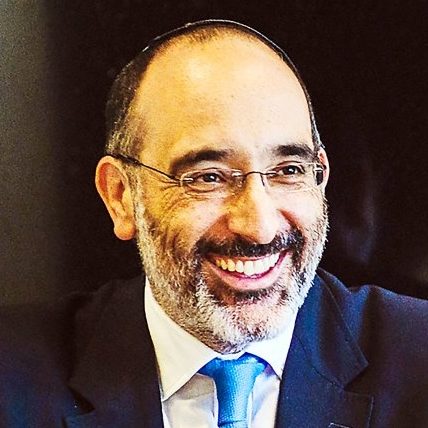click to dowload our latest edition
CLICK HERE TO SUBSCRIBE TO OUR NEWSLETTER


Published
6 years agoon
By
adminCHIEF RABBI DR WARREN GOLDSTEIN
This is especially true when it comes to the shofar. Its arresting blast has a particularly profound effect. The notes of the shofar startle us into alertness, propelling us into a heightened state of consciousness that allows us to see things clearly and act resolutely.
Friends, the mitzvah of shofar on Rosh Hashanah requires active intentionality. It requires not just hearing the sound, but listening to it. Based on the Gemara, the Rambam rules that both the one who is blowing the shofar and the one who is listening to the shofar must have in mind that they are fulfilling a specific Torah obligation. But the Rambam goes a step further, emphasising the importance of attuning ourselves to its potent moral and spiritual message.
He writes, “Even though the blowing of the shofar on Rosh Hashanah is a decree of the scripture, there is a hint in it which is to say ‘awaken those who sleep from your slumber… search out your deeds and return in repentance and remember your creator those who forget the truth in the emptiness of the time…’.” (Laws of Repentance 3:4).
The shofar is a call to return to our best selves. It’s an enriching, potentially life-changing intellectual, emotional and spiritual experience. Sometimes, we cruise through life on autopilot. Not thinking too much about what we say or do, not stretching ourselves to be better. The shofar is our divine wake-up call. It can arrest our moral and spiritual slumber, jolt us into being present, jumpstart our lives. It can reawaken us to our priorities and purpose, and return us to a path of personal and spiritual growth. The moments of hearing the shofar sounded in shul on Rosh Hashanah can become a deep spiritual experience for us as we are literally listening to G-d calling out to us to become better people, to fulfil our potential.
The notes of the shofar are particularly specific. Essentially, the pattern is a straight sustained note (a tekiah), followed by a broken note (either a shevarim or a teruah), followed by another straight note. What is the significance of these notes? What does this pattern mean?
Rabbi Samson Raphael Hirsch connects this sequence to the sounds of the chatzotzrot, the silver trumpets used to direct the movements of the Jewish people in the desert, where we journeyed for forty years after leaving Egypt. The straight blast, the tekiah, was sounded to call people to attention. The broken blast, the teruah, was an indication to the people to break camp – to dismantle their tents and pack their belongings and move on to the next place. This was followed by another straight blast, indicating that the time had come to proceed on their journey.
In the context of the shofar, Rabbi Hirsch explains that the first unbroken note, the tekiah, is G-d calling us to attention, to accept his authority in our lives and prepare to receive his message. The broken notes, the shevarim-teruah, represent breaking camp with our past selves, our entrenched bad habits. This requires conducting a deep, honest reassessment of our lives, in terms of the Torah’s values and principles, to determine what needs to be taken with us on our new journey, and what we need to leave behind. The final straight note, the tekiah, is a call to move forward into the future with our new resolutions and a renewed sense of direction, aligned to G-d’s will and our true, elevated purpose.
Like our ancestors, we are on a journey in life. And that journey requires a map, a compass. Our creator has put us on this earth for a particular purpose, and in order to ensure that we fulfil it, we need his direction. In the same way the Jewish people in the desert needed to be alerted when to break camp and go forward, we too need that wake-up call to break from the harmful things we are doing, to find new, positive, productive things to do, and journey in a new direction. The map and the compass of our lives is the Torah, but sometimes we forget that, and need a reminder.
The shofar is that reminder. It calls us to take note, to step away from the turbulence of day-to-day life and to hear the crystal-clear call of G-d, the blast of the shofar that pierces our souls like music. It stops us in our tracks, and calls on us to disengage from all the things that we become attached to, all the extraneous things that are not part of the map of our lives. And it calls us to move forward, into the future, with determination and conviction.
This Rosh Hashanah, we will hear the sound of the shofar about 100 times each day in shul. It is the sound that can awaken us if we truly listen to its message. It is the sound that stirs us to look deep inside ourselves and make changes. It is the sound that opens the door, and beckons us to a new, glorious future – to who we were meant to be. And all we need to do is listen.
